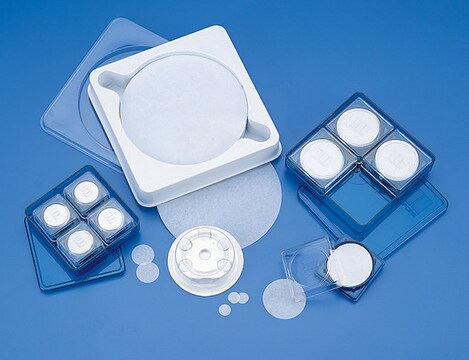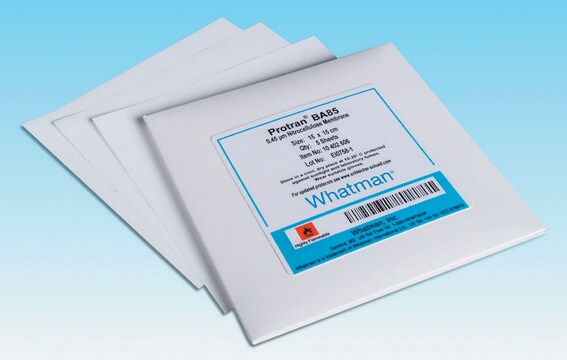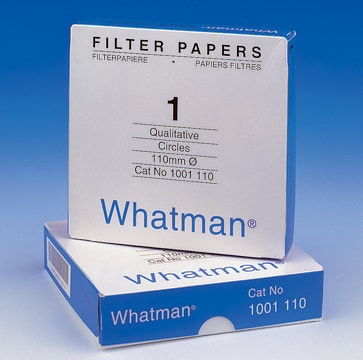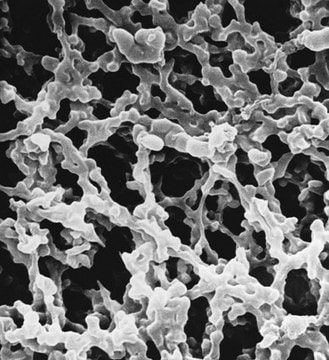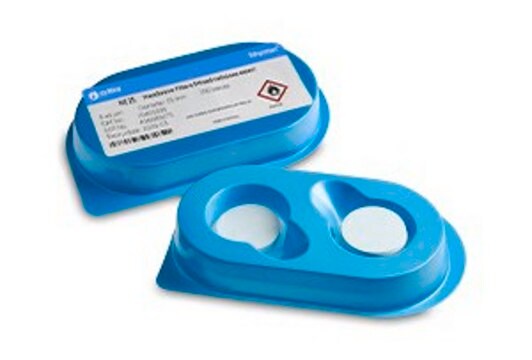WHA10401106
Whatman® nitrocellulose NC45 filter discs 0.45 μm pore size
white, hydrophilic, 100 ea, 25 mm diam
Synonim(y):
Z697117, polycarbonate filter, polycarbonate membrane
About This Item
Polecane produkty
Nazwa produktu
Whatman® nitrocellulose membrane filters, NC45 Membrane Circles, diam. 25 mm, pore size 0.45 μm
sterylność
non-sterile
opakowanie
pkg of 100 ea
producent / nazwa handlowa
Whatman 10401106
Whatman Article No. 28414958 (US reference)
Średnica
25 mm
wielkość porów
0.45 μm
Szukasz podobnych produktów? Odwiedź Przewodnik dotyczący porównywania produktów
Powiązane kategorie
Cechy i korzyści
- Narrow pore size distribution for improved surface capture and analysis.
- Low levels of extractables to ensure sample integrity.
Inne uwagi
Informacje prawne
Hasło ostrzegawcze
Warning
Zwroty wskazujące rodzaj zagrożenia
Zwroty wskazujące środki ostrożności
Kod klasy składowania
11 - Combustible Solids
Wybierz jedną z najnowszych wersji:
Certyfikaty analizy (CoA)
Przepraszamy, ale COA dla tego produktu nie jest aktualnie dostępny online.
Proszę o kontakt, jeśli potrzebna jest pomoc Obsługa Klienta
Masz już ten produkt?
Dokumenty związane z niedawno zakupionymi produktami zostały zamieszczone w Bibliotece dokumentów.
Nasz zespół naukowców ma doświadczenie we wszystkich obszarach badań, w tym w naukach przyrodniczych, materiałoznawstwie, syntezie chemicznej, chromatografii, analityce i wielu innych dziedzinach.
Skontaktuj się z zespołem ds. pomocy technicznej